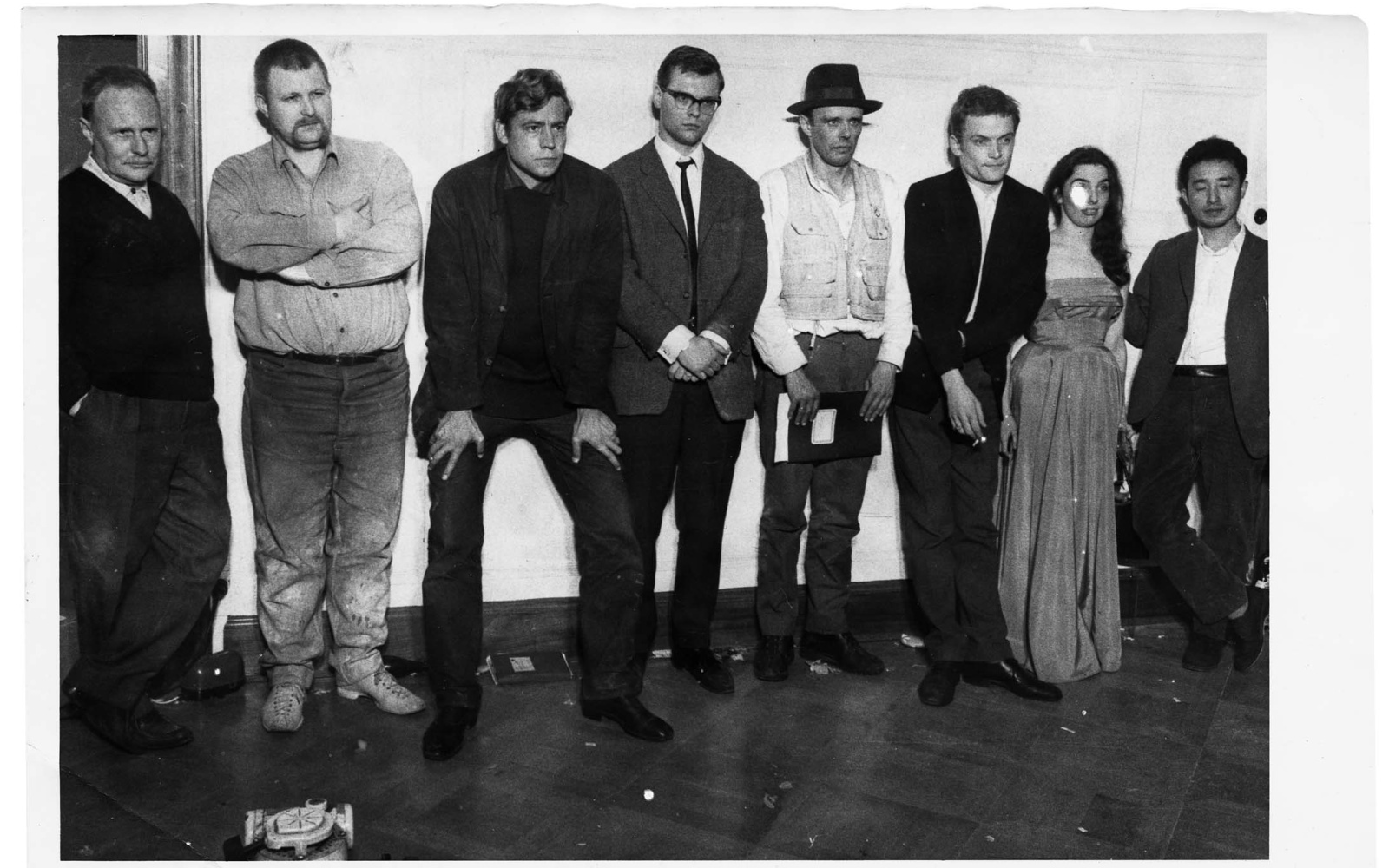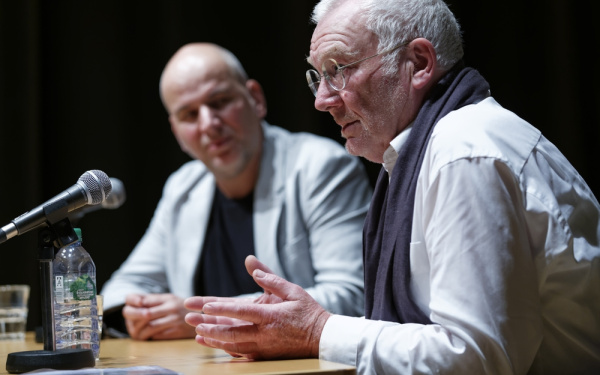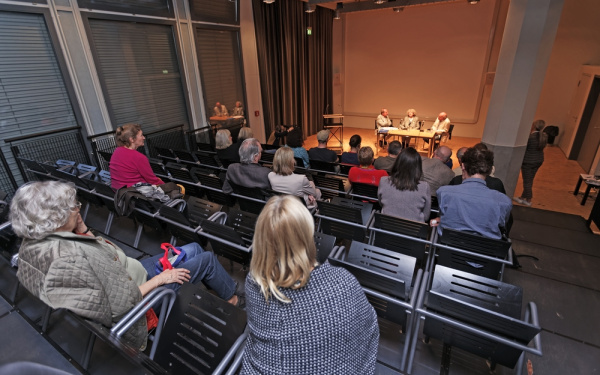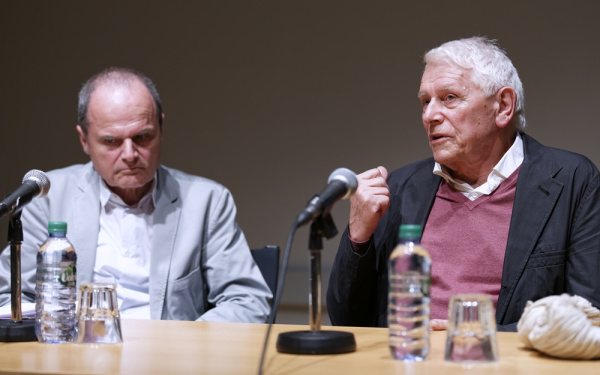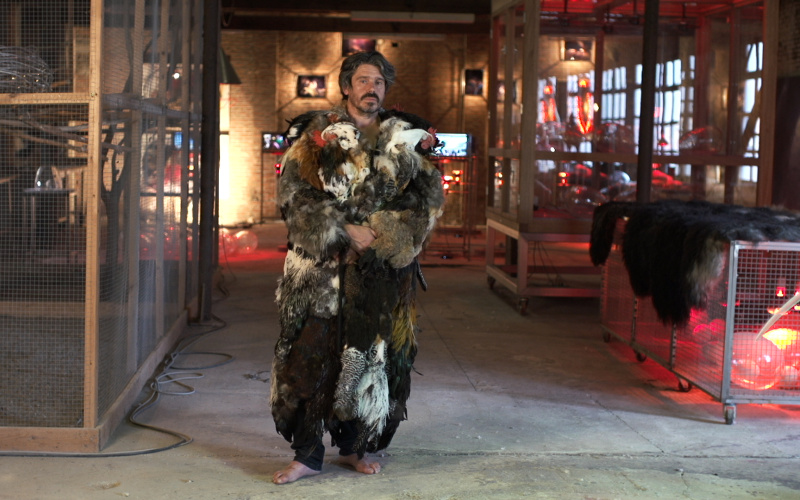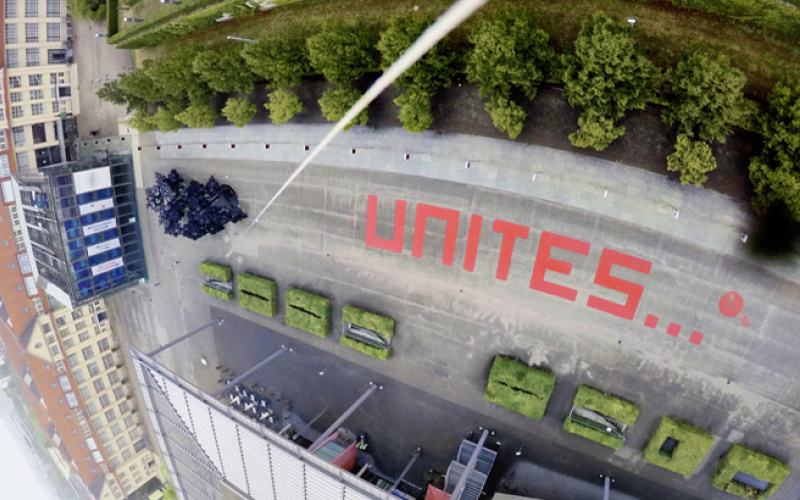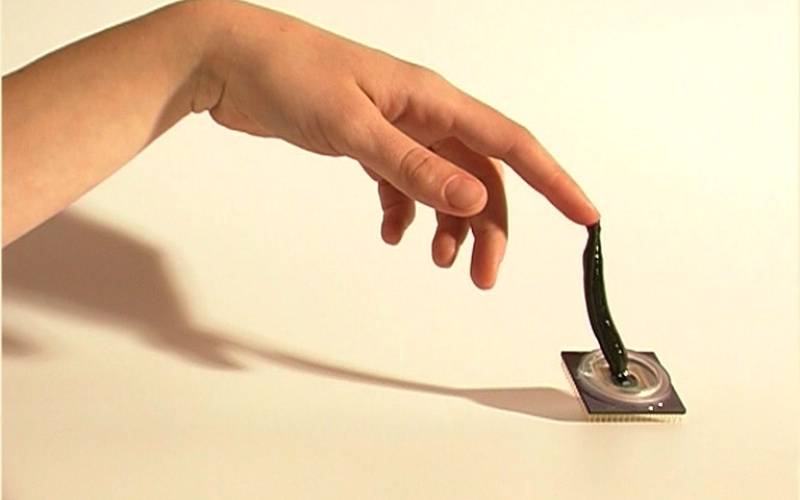Performance in front of the Camera – Joseph Beuys and Wolf Vostell in Film
Actions are ephemeral events susceptible to mediation only in fragments by way of photographs, documents and props.
BY SARAH HAPPERSBERGER
Thus, film had already been used in the early 1960s as a medium for the documentation of performative art. At the same time, artists began making appearances in front of the camera for the purposes of presenting their work to a broad public whilst in discussion with experts, colleagues and collaborators.
In the film-screenings & panel discussions on the exhibition »Beuys Brock Vostell« (from May 24 till November 9, 2014) films were presented that recorded a selection of Actions by Joseph Beuys and Wolf Vostell for posterity, and that offered a platform for the artist personalities.
Social-political claims
The film »Happening, Kunst, Protest 1968« by Helmut Herbst and Friedrich Heubach, illustrates the connection between Action Art and 1960s protests. The collage of recordings of Happenings drawn from television reports, films and artists interviews reveals the social-political claims of many actions and shows their one-dimensional presentation in the media.
The significance of media for the public perception and art-historical classification of the Happening, was also thematized in the following discussion. Based on his own experience with the Happening, Friedrich Heubach explains the discrepancy between the ideal of participation and the actual role of the visitor in books and films.
Artistic critical analysis
Wolf Vostell was the focus of the second film evening. Ulrike Ottinger’s film »Berlin Fever« offers visitors the possibility to trace the course of a Happening from its initial conception through to realization. Rudij Bergmann depicted Vostell as an innovative media artist who had set new standards, above all, in his artistic critical analysis of the Shoa.
The personal relationship of the two film-makers to the artist came to expression in the discussion with Eckhart Gillen. Both Ottinger as well as Bergmann had numerous anecdotes to relate and both pointed out the artist’s inexhaustible energy, who was also ready to provide insights into his creative principles before Bergmann’s camera.
The films of the last film evening also provided a holistic perspective of the exhibition’s artists. Werner Krüger accompanied Beuys and Vostell with the camera while at work and in private for many years ‒ both film portraits were completed in 1979 and 2010 respectively. Whereas, in the Beuys film eye-witnesses also have their say, as well as the artist, in the later film Krüger concentrates entirely on the physical presence, the statements and the work of Vostell.
Transformed relationship to the artist
As Krüger remarked in discussion, in the films a transformed relationship to the artist, but also to the technical possibilities of representation or works of art is discernable. However, the films resemble one another in one point: both give their protagonists sufficient scope to situate themselves within their living and atelier spaces. Accordingly, the camera is suited not only for documenting Actions, but also opens a new format of performance: the artist’s self-expression in the film.
Category
News Category
- take a look… behind the scenes of ZKM
